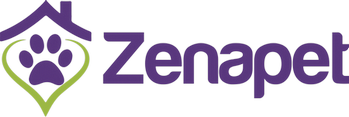Today's dog's many chronic problems are partly because of the toxic load the carry around with them. A “toxic load” is the amount of chemicals or other biological foreign substances that accumulate in the body of an animal over weeks, months and years.
In most cases, the sicker the animal, the heavier the load of toxins he has. Your dog’s kidneys and liver are the ones assigned in the task of cleaning toxins from the body, same with the human body.
Considering the small size of your dog’s organ compared to yours, it is very easy to see that it would not take being exposed to too many foreign substances before your dog’s toxic load became too heavy to manage. The organs in the dog’s body begin to wear out when too much is demanded of them for too long.
When your pet’s detoxifier organs can’t keep up with the toxic load for whatever reason, his body will try to remove this by the use of other means – like through the skin or mucous membrane.
Commonly a dog’s itchy, flaky skin, runny nose, or mucous covered faces is the sign that the body is attempting to help the liver and kidneys to eliminate the toxins and other irritants,
Chronic conditions like itchy and irritating skin, ear infections and GI disturbance typically intermittent diarrhea. Vomiting or loose stools are often signs of a toxin building up in your dog’s body that is no longer able to effectively deal with heat.
When all the waste removal system fails or become insufficient, your dog’s body will eventually become overwhelmed with toxins and serious health conditions will begin to develop.
What are the sources of toxins?
There are many factors that can contribute toxins with the possibility of building it up inside your pet. The three biggest offenders are the following:
- Environmental toxins which can be found on the inside or out. This includes fertilizers, herbicides, pesticides, polluted indoor air, and chemical household cleaners.
- Vaccines and other drugs, flea/tick and heartworm preventives.
- Process pet foods containing allergenic ingredients including grain, and other carbohydrates, preservatives and other chemicals; being fed by the same source of protein day in a day out for an extended period of time.
The one thing in common with these toxins is that we as the dog’s parent are the ones most responsible of how much of these toxins we expose our precious dogs to.
Your dog lives low to the ground, so he's getting a whopping dose of whatever’s under his feet, whether it’s fresh application of weed killer or a tile cleaner residue.
If you have been taking your pet for vaccinations every year just like many traditional vets and other pet healthcare workers still insist on, perhaps you are also applying a chemical flea/tick preventive during the warmer months. Chances are your dog's system is heavily burdened with the toxic byproducts of these chemicals.
How to Lower Your Dog’s Toxic Load
- You can try to keep your pet away from outdoor areas known to be heavily laden with herbicides, pesticides, or fertilizers.
- You can regularly soak your dog’s paws to get rid of chemicals and allergens picked up on paws.
- Don’t hesitate to bathe your dogs regularly, especially if he has irritated skin.
- Try improving your dog’s indoor air environment by forbidding smoking in your home and office and switching to non-toxic cleaning products.
- Provide clean, pure, high-quality drinking water for your dogs.
- Don’t subject your dog to yearly vaccinations or unnecessary drugs of any kind.
- Feed a balanced, species-appropriate diet, preferably raw, either homemade or commercial.
- Regular exercises provides your dog with countless benefits, including helping the bodies detoxification efforts

